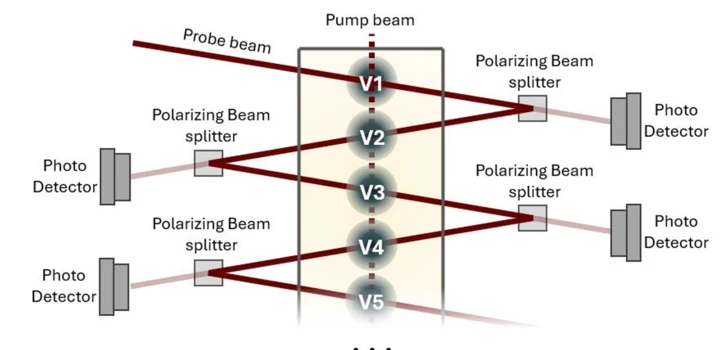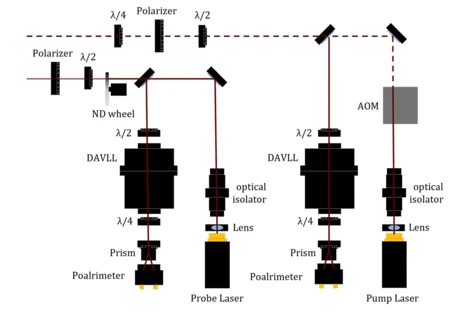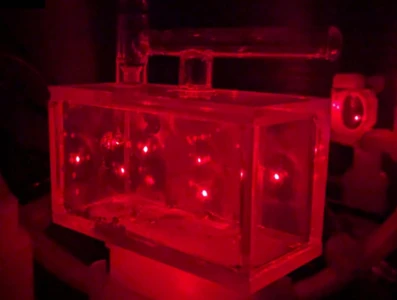Development of multivoxel magnetometer
Overview
The magnetic field values should be measured inside a single cesium vapor cell at different points with the possibility to change the voxel size during the measurement for gaining more sensitivity or a better special resolution. So far, the trend is to use more micro cells instead of one big cell. This way the position resolution is limited, and cross talk of different magnetometers can become a problem as well as the synchronization of the single sensors.
Motivation
At our chair we have at least eight different applications for atomic magnetometer ranging from the search of new physiks, field reconstructions and pressisions measurement to biomagnetic measurements. In the outher world the application will not stop in material science, the geological world (with geopolitical interests) and in the quantum application world. For that reason, it is essential to come up with new concepts of optical atomic magnetometers and test their feasibility. On top comes the cancellation of the lightshift effects when the voxel magnetometer is used as a gradiometer.
Working principle
In general, our atomic vapor magnetometer uses the spin light coupling of the outer shell cesium electron and resonant probe beam. This way the spin orientation of the electron will be measured. In our case the spin precession frequency (larmor frequency) is measured which directly depends on the outer magnetic field. To maximize the signal the atoms in the interaction zone will be pumped to a cohered state. The interaction length of a single atom is limited by the pressure of the buffer gas, this way multiple regions (Voxels) can be measured independently in a single cell. The schematic of concrete implementation is shown in Figure 1.

Own cell fabrication
In order to build a new magnetometer the cell manufacture is a key essential for the application, since optic components can be directly implemented in the cell and the preasure of the buffer gas can be in situ changed, which leads to a live changing of the Voxel size. We developed a cesium vapor stable glas glueing technique for long lifetime vapor cells and a filling technique for cesium and a buffer gas. A usable cell is shown in Figure 2 inside the nonmagnetic setup.
Experimental Setup
The experimental setup consists of three parts. The gas mixing system is shown in (Figure 3) and provides an ultra-pure automized gas pressure system which is connected to the cell. The magnetic laser setup Figure 4 and the nonmagnetic readout setup (Figure 5 b)) which is located in a magnetically shielded environment and the readout electronic (Figure 5 a)).
The Gas mixing system is usable for different inert gases with it one can do several different cell parameter measurements.
The Laser setup provides a free space probe and a pump beam for polarizing and read out of the caesium vapor. For longtime drift stability the laser diodes can be operated in a feedback mode with a DAVLL (Dichroic Atomic Vapor Laser Lock). For the Synchronous pumping a AOM is used in the path of the pump beam.


Outlook
It has been shown that a gradient can be seen in self-built buffer gas cells in a macroscopic cell and three voxels for a single light polarization. Further cells need to be built to increase the transparency of the cell and improve the light path. With that the new sensor idea can be tested in real life applications.
Contact / Links
For collaboration, thesis opportunities, or further inquiries, please contact:
M.Sc. Maximilian Huber
- Tel.: +49 (89) 289 - 51326, 53714
- maximiliandominik.huber@tum.de
Publications and finished Theses
- Maximilian Lang, Design and Feasibility of a Multi-Voxel Atomic Vapor Magnetometer for Spatially-Resolved Magnetic Field Sensing Inside a Single Cell. Sept 2025. LMU/TUM Master Thesis
Involved Persons and Former Members
Currently Involved persons: Maximilian Huber, Dr. Hans Steiger
Former Members: Maximilian Lang

